
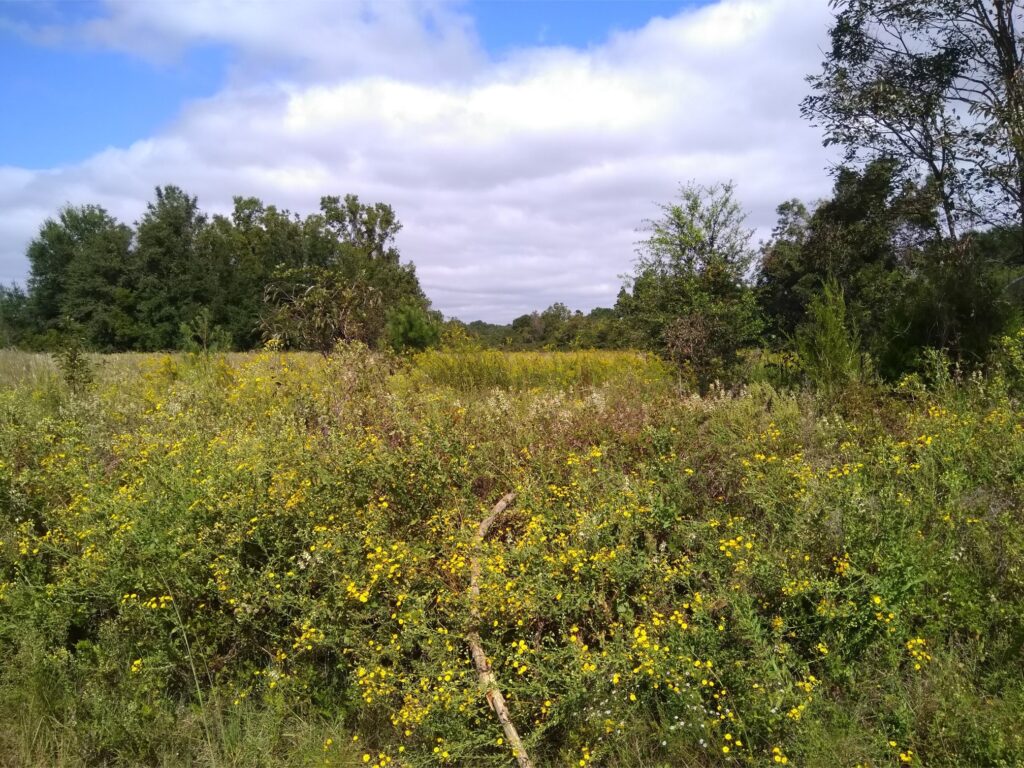
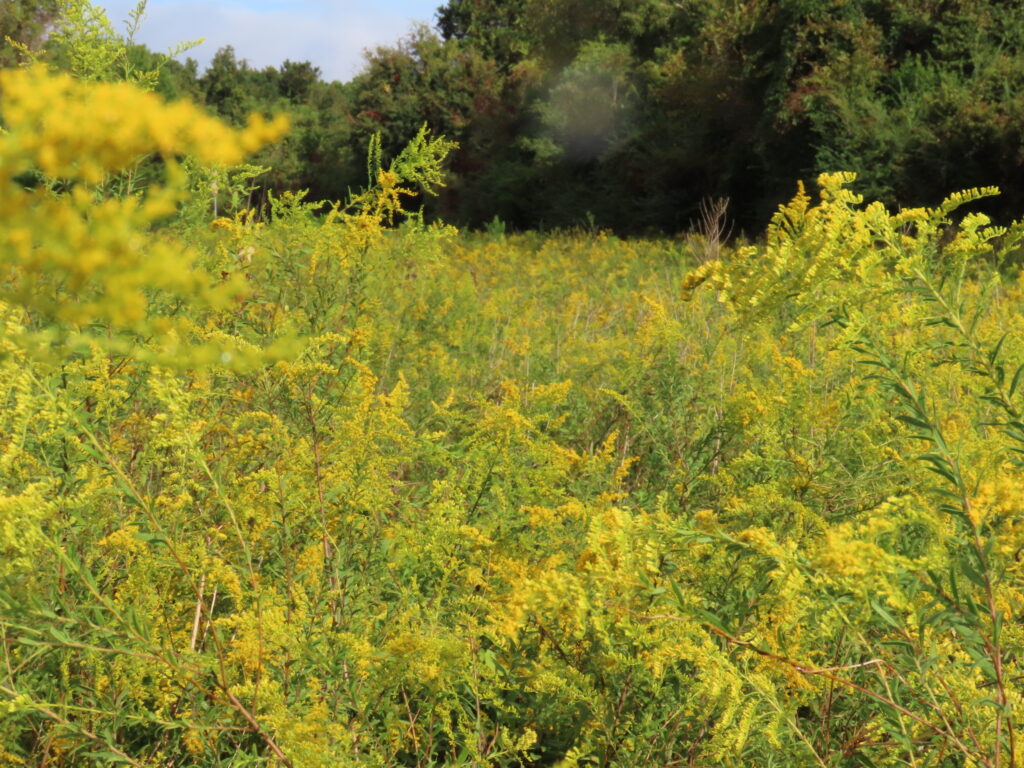
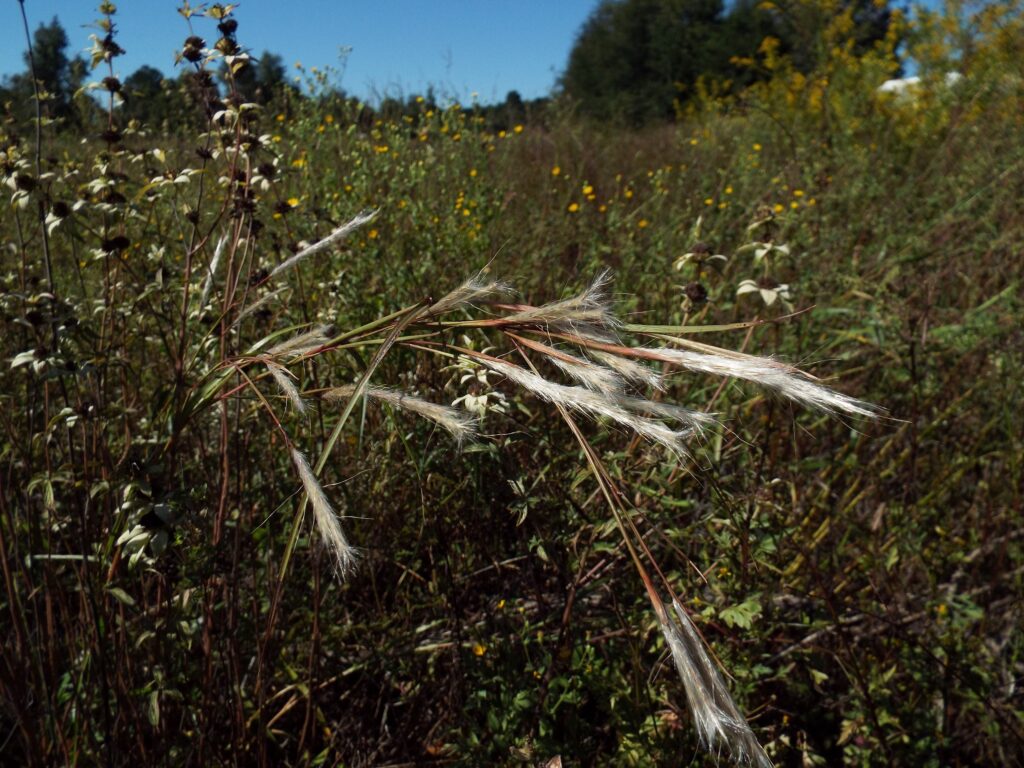
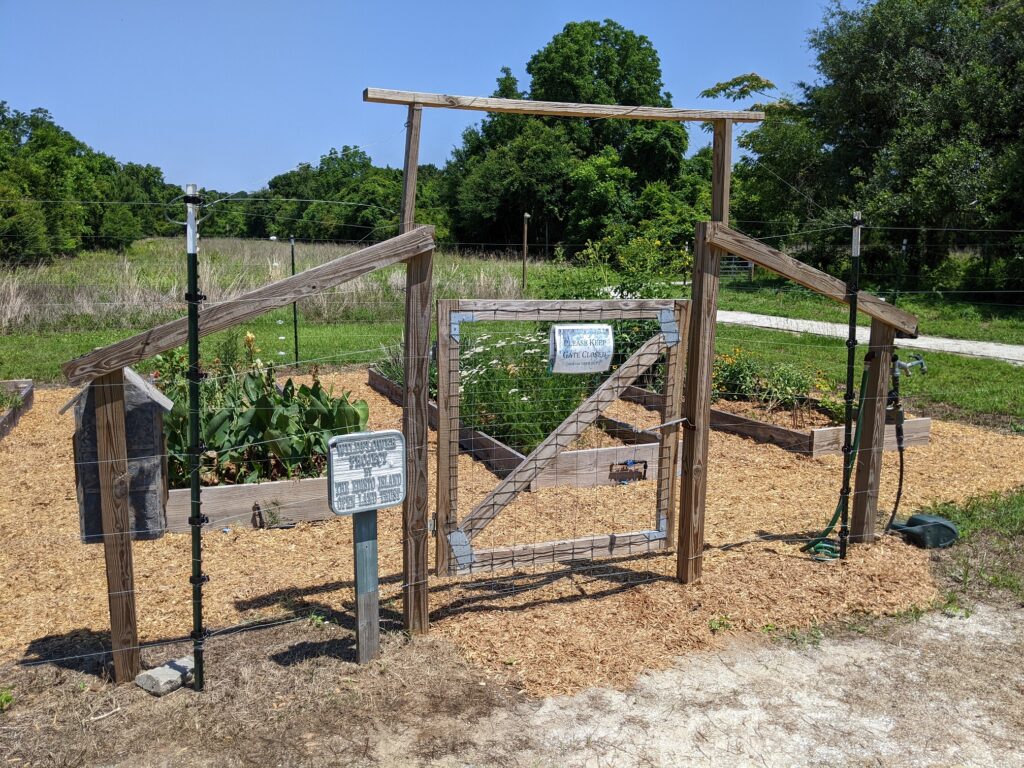


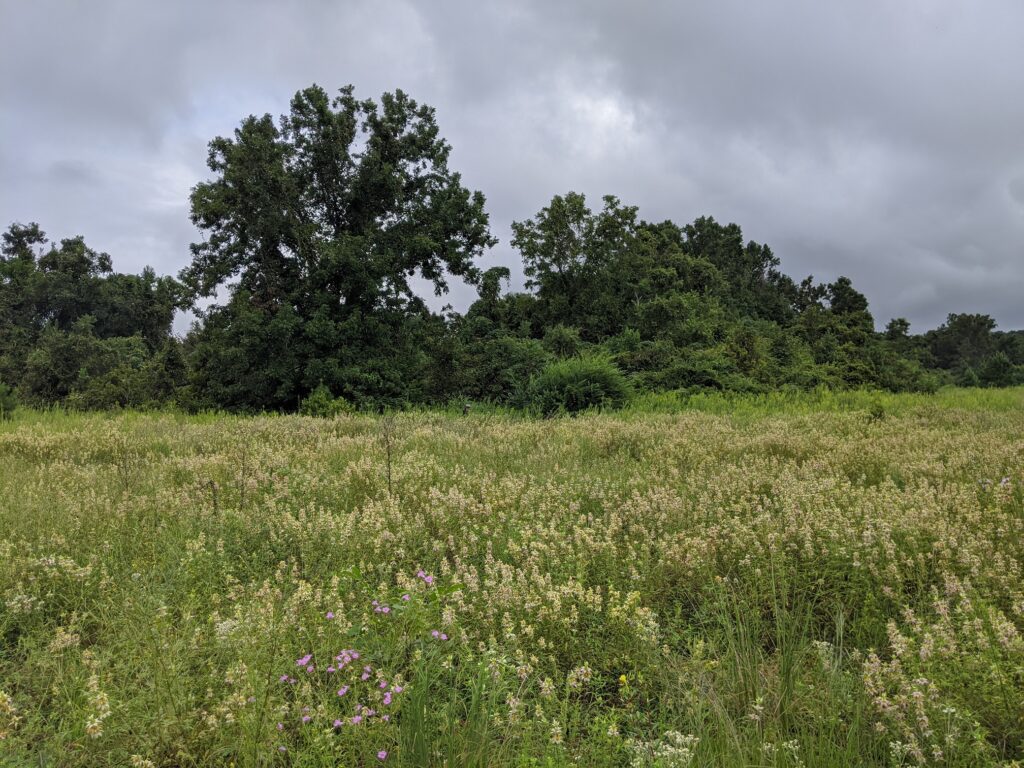
This year for Pollinator Week (6/17 – 6/23) we’re doing a 7-part series about native pollinators on Edisto Island!
The Hutchinson House is an iconic local landmark and touchstone for interpreting African-American history on Edisto Island from the Emancipation through Reconstruction and onward. EIOLT has worked the last 8 years to restore the house and interpret its history.
Just as the House is significant to interpreting our history, the land it sits on is a stellar example for interpreting sea island Pollinator Habitat. EIOLT purchased the adjacent 9-acre lot in 2019 and have diligently maintained its existing wildflower meadows. These fields burst to life in fall with a profusion of native wildflowers that are inundated in a billowing haze of pollinators! We’ve even built a pollinator garden on site to better showcase the beauty of these meadows.
These wildflower meadows are what are commonly referred to as an “Oldfield” habitat. As the name implies, oldfields are agricultural fields left to go fallow. Often, they’re burned or mowed sporadically to control woody plants but otherwise are left to their own devices. An oldfield’s beauty is in its simplicity and purity. A field gone fallow allows for the local “seed bank”, the native plant seeds persisting in the top soil, to be exercised and showcased. Over time, new plant species will germinate from the bank and duke it out in the oldfield free-for-all until an equilibrium is reached. Throughout that process, plant structures, micro-habitats, complex ecological interactions, and diversity will build, creating stellar pollinator habitat.
“Pollinators” are not a monolithic group, it’s a loose collection of animals that spread pollen. Some need pollen, others nectar, some leaves, others leaf litter, hollow stems, bare soil, wet mud, or dead trees; every species has its own unique list of living conditions. Pollinators are a diverse group and, consequently, a diversity of habitat is needed to support them all. Diverse site conditions breed a diverse assemblage of plants, which in turn create a diversity of habitat, a sprawling miniature metropolis of stems and leaves, to support a diversity of pollinators.
Check out this video about the wildflower meadows at the Hutchinson House: